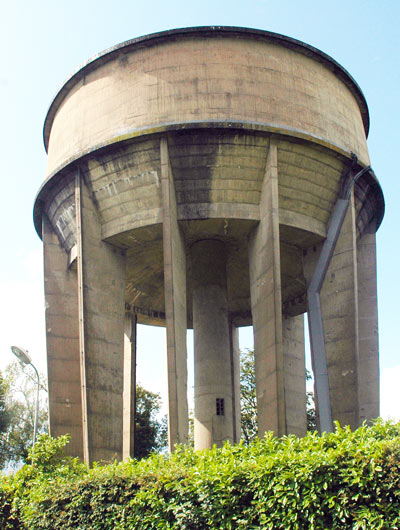- Ireland’s greenhouse gas emissions decreased by 6.8% (4.0 Mt CO2eq) in 2023, with reductions in almost all sectors. This is the lowest that greenhouse gas emissions have been in three decades, and below the 1990 baseline.
- Emissions data show the largest single year reductions in the energy and agriculture sectors and the lowest level of residential emissions since 1990, while transport emissions were below pre-Covid levels.
- Power generation emissions decreased by 21.6 per cent (2.2 Mt CO2eq)
- Agriculture emissions decreased by 4.6 per cent (1.0 Mt CO2eq)
- Residential emissions decreased by 7.1 per cent (0.4 Mt CO2eq)
- Transport emissions increased marginally by 0.3 per cent (0.03 Mt CO2eq)
- Emissions per capita decreased from 11.4 tonnes CO2eq/person to 10.4 tonnes CO2eq/person in 2023.
The Environmental Protection Agency (EPA) has today published its provisional greenhouse gas emissions for Ireland for 2023. The figures show a reduction of 6.8% compared to 2022, with emission reductions in almost all sectors. In total, 55 million tonnes of carbon dioxide equivalent (Mt CO2eq) were emitted, excluding emissions from Land Use, Land Use Change and Forestry (LULUCF).
Commenting on the report Ms Laura Burke, Director General, EPA said: “Ireland’s greenhouse gas emissions in 2023 were at their lowest level in over three decades, as a result of the largest reduction in emissions outside of recession. These are significant findings that signal the impact of climate action and decarbonisation measures across Ireland’s economy and society. We see the impact of more renewables and interconnection powering electricity, less fossil fuel use in home heating, reduced nitrogen fertiliser use in agriculture and more biofuel in transport.”
Ms Burke added, “The data indicates a move towards reducing greenhouse gas emissions at the scale and pace required to meet our climate ambition of a 51% reduction by 2030. However, while these are positive results for the year 2023, we are still well off track in terms of meeting EU and national 2030 targets. We need to maintain and further build momentum.”
The assessment shows that Ireland complied with its EU Effort Sharing Regulation (ESR) commitments for 2021-2023, with the use of allowed flexibilities. However, these latest data show that 2023 greenhouse gas emissions were still only 10.1% below 2005 levels, well short of Ireland’s EU Effort Sharing reduction commitment of 42% by 2030.
With regard to compliance with national commitments under the Climate Act 2015 (as amended), the assessment shows that greenhouse Gas emissions (incl. LULUCF) are 7.8% lower than in 2018, well off the National Climate Ambition of a 51% reduction by 2030. We need to achieve an extremely challenging annual reduction of 8.3% for each of the years 2024 and 2025, if Ireland is to stay within the first Carbon Budget.
A summary of the trends from key sectors:
Energy Industries: Emissions decreased by 21.6% to 7.8 Mt CO2eq. This was driven by a 12-fold increase in imported electricity (9.5% of electricity supply in 2023), in combination with an increase in the share of renewable energy (to 40.7% in 2023) and a reduction in the use of coal, oil and peat. The emissions intensity of power generation decreased from 332g CO2/kWh in 2022 to a historic low of 255g CO2/kWh in 2023.
Agriculture: Agriculture emissions decreased by 4.6% to 20.8 Mt CO2eq due to an 18% reduction in fertiliser nitrogen use, reduced lime application and overall reduction in numbers of livestock. Dairy cow numbers increased by 0.6%, however total milk production decreased by 4.7% in 2023.
Residential: Emissions decreased by 7% to 5.3 Mt CO2eq. This was the second substantial annual reduction in succession. High fuel prices and a milder winter were significant contributors to the reduction in fossil fuel use, in addition to the introduction of nationwide solid fuel regulations. Over 30,000 heat-pumps were installed in Irish homes in 2023, bringing the total to 120,000.
Transport: Emissions increased marginally by 0.3% to 11.8 Mt CO2eq. Emissions are now 4.3% below 2019 pre-Covid levels. An increase in electric vehicles and biofuel use partly offset a 3% increase in the vehicle fleet.
Commenting, Ms Mary Frances Rochford, Programme Manager, EPA said: “There are many positives to be taken from this assessment. We see emission reduction milestones achieved in many key sectors in 2023. Residential emissions were at their lowest level since 1990, we saw the largest year on year reductions to date in the Energy and Agriculture sectors. All of which have contributed to a decrease in our emissions per capita from 11.4 to 10.4 tonnes CO2eq in 2023.”
In line with new research in the latest update to the inventory, the EPA refined the information underpinning the agricultural figures which has led to an 8.5 Mt CO2eq reduction in emissions from agricultural activities from 2018-2023. It is imperative that this is now incorporated into carbon budgets to ensure that they reflect latest science, data and knowledge on greenhouse gas emissions in Ireland.
The Greenhouse Gas Emission Inventory 1990 to 2023 is available on the EPA website and the EPA Greenhouse Gas web resource is also available online.






Recent Comments